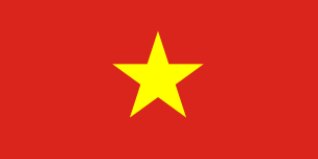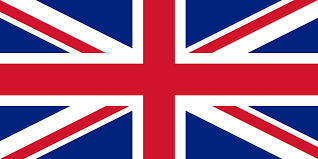Located on the banks of the Perfume River, the Imperial City of Hue is a UNESCO World Heritage Site and one of the most important historical attractions in Vietnam. Once the capital of the Nguyen Dynasty, it was the seat of power for 143 years. Today, the Imperial City Hue remains a timeless symbol of Vietnamese royalty and national pride. Let’s explore!
1. Introduction to the Imperial City of Hue
1.1. Location
The Imperial City Hue is centrally located in Hue City, Thua Thien Hue Province, within the larger Citadel complex. It sits on the north bank of the Perfume River and is easily accessed via car, bicycle, or by joining a guided city tour. With HoaBinh Tourist’s Hue one-day tour, you can explore the site comfortably in vehicles ranging from 7 to 45 seats – or opt for our VIP limousine for a luxurious heritage experience.

From royal palaces to spiritual shrines, explore the grandeur of Vietnam’s imperial past.
1.2. Entrance Fee
The general entrance fee to the Imperial Palace Hue is:
- 150,000 VND for Vietnamese adults
- 200,000 VND for international visitors
- Free for children under 1.2 meters in height
Tickets include access to key sites within the Imperial City Hue, including Ngo Mon Gate, the Forbidden Purple City, and many of the inner palaces.
1.3. Opening Hours
For those planning their visit, here are the updated Imperial City Hue opening hours:
- Summer (April – September): 7:00 AM – 5:30 PM
- Winter (October – March): 7:30 AM – 5:00 PM
Open daily, including holidays.
To avoid crowds and midday heat, early mornings are ideal for both photography and peaceful exploration.
1.4. Map of the Imperial City of Hue
The Imperial City is a vast complex with multiple gates, courtyards, palaces, temples, and gardens. Visitors can download an interactive map or pick one up at the entrance. Guided tours from HoaBinh Tourist include curated routes to key highlights, ensuring a rich and seamless experience.
2. Historical Story of the Imperial City of Hue
Constructed in the early 1800s under Emperor Gia Long, the Imperial City Hue served as the political and cultural capital of Vietnam during the Nguyen Dynasty. Inspired by Beijing’s Forbidden City, it was meticulously planned following feng shui principles.
Despite suffering heavy damage during wars, many parts have been beautifully restored, offering a window into Vietnam’s golden age of imperial rule. Today, the city stands as a powerful reminder of resilience, tradition, and national identity.

More than stone and wood – the Imperial City carries the soul of a nation.
3. Architectural Highlights of the Imperial City of Hue
The Imperial Palace Hue features a unique blend of traditional Vietnamese design, Confucian aesthetics, and Chinese imperial influences. From majestic gates and red lacquered pillars to golden roof tiles and lotus ponds, every detail reflects authority and spiritual philosophy.
Don’t miss the:
- Ngo Mon Gate with its iconic five entrances
Thai Hoa Palace, where emperors held royal ceremonies - Forbidden Purple City, once reserved exclusively for the emperor and his family
Each structure holds symbolic meaning – not just architectural beauty, but expressions of cosmic order and royal power. That’s why this site is considered one of the most attractive destinations in Hue for tourists.

Harmony, symmetry, and symbolism define the architecture of Vietnam’s last royal capital.
4. Famous Attractions Inside the Imperial City of Hue
4.1. Ngo Mon Gate
This grand southern entrance is one of the most iconic symbols of Imperial Hue. Built in 1833, Ngo Mon Gate served as the main entrance for the emperor, featuring a five-arched gateway and a beautiful belvedere pavilion above. It’s a must-see photo spot and an architectural marvel.

Stand before Ngo Mon Gate – where emperors once passed and history still breathes through every carved stone.
4.2. Imperial Citadel Hue Vietnam
At the heart of the Imperial City Vietnam, the Imperial Citadel housed the Nguyen Dynasty’s central administration. With massive walls, defensive bastions, and grand palaces, it showcases the power and authority of Vietnam’s final imperial era.
4.3. Forbidden Purple City
Modeled after China’s Forbidden City, this sacred area was once accessible only to the emperor and his family. Though heavily damaged during wartime, ongoing restoration allows you to glimpse the private world of Vietnam’s royals.

From above, the Forbidden Purple City reveals a quiet maze of courtyards and walls – the hidden heart of Hue’s imperial past.
4.4. Discover Remarkable Historical Sites in the Imperial City of Hue
Within the citadel, several lesser-known but fascinating historical treasures await:
- Long An Palace: Former royal residence, now a library of imperial archives.
Hue Royal Antiquities Museum: Exhibits royal costumes, ceramics, and daily items from the Nguyen court. - The National Academy (Quoc Tu Giam): Vietnam’s first national university.
- Tang Thu Lau: Ancient imperial archive building surrounded by lotus ponds.
Vien Co Mat – Tam Toa (Secret Council – Three Offices): The administrative nerve center of the imperial court. - The Nine Holy Cannons: Symbolic cannons representing five elements and four seasons.
The Citadel Bastions: Defensive towers overlooking the moat and city walls. - Tinh Tam Lake: A tranquil garden retreat used by royals for poetry and reflection.
5. Experiences and Activities for Visitors in the Imperial City of Hue
- Join guided tours to uncover hidden stories with expert narration.
- Watch royal court music performances at Thai Hoa Palace.
- Rent traditional ao dai and take imperial-style photos in the courtyards.
- Explore on bicycle to leisurely cover the expansive complex.
- Participate in calligraphy or incense-making workshops, offered seasonally.
With HoaBinh Tourist, all experiences are curated with care, including access, timing, and VIP services for a fully immersive and worry-free journey.

More than sightseeing – immerse yourself in heritage through engaging experiences.
6. Nearby Attractions
- Thien Mu Pagoda: One of Vietnam’s oldest and most revered Buddhist temples.
- Hue Imperial Tombs: Including Tu Duc, Khai Dinh, and the mausoleum of Emperor Minh Mang.
- Dong Ba Market: Ideal for local food, handicrafts, and souvenirs.
- Perfume River Cruises: Enjoy sunset views from a traditional dragon boat.
All attractions can be seamlessly included in your itinerary with HoaBinh Tourist’s full-service tours, ensuring comfort and depth of experience.
Read more: Explore Hue incense village – A colorful cultural stop in Hue

Extend your cultural adventure with more historic gems around the citadel.
7. Relive the grandeur of Vietnam’s last dynasty – your journey to Hue starts here
A visit to the Imperial City Hue is not just about history – it’s about connecting with Vietnam’s royal soul. As part of the national campaign “Vietnam – Timeless Journey, Endless Love”, HoaBinh Tourist invites you to experience the richness of Hue through curated, all-inclusive tours.
Let us elevate your Hue travel with:
- Private car rentals (7-45 seats), including VIP limousines.
- Quick, flexible flight booking with the best rates.
- 5-star hotel stays for a luxurious and restful trip.
- Tailored Hue heritage itineraries for history lovers and cultural explorers.

Whether you’re wandering imperial corridors or watching sunset over Tinh Tam Lake, let your royal journey begin with HoaBinh Tourist.












